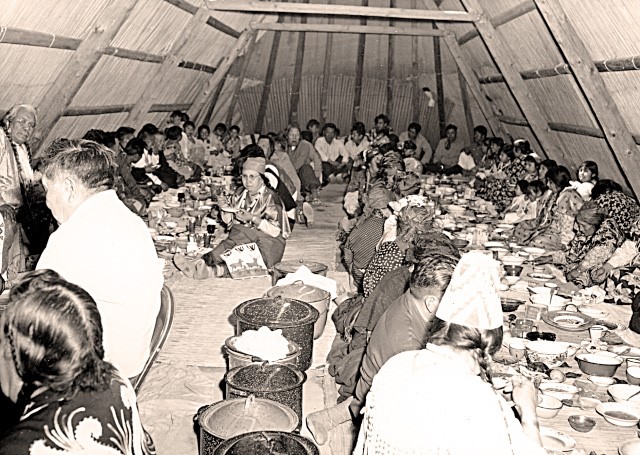"Greater good" vs. sacred cultural practices
Eminent domain’s “greater good” clashes with sacred cultural practices
Asked what the “greater good” means to him, Wilbur Slockish provides a distinctively different perspective than centuries of U.S. and European eminent domain laws and practices: “Greater good means honor the animals. Let them rest, let them refill, let them build up the environment.” For thousands of years there was a tangible and practical connection between Native Americans and Columbia River Salmon. Slockish makes this connection between salmon and sustenance of the Native American community:
"There were a lot of fish in there that were harvestable there for our use. That was our main diet. And we didn’t waste any of it. We ate the heads, the fins, the tails. I really liked the tails. There’s too much oil in the belly, that’s where all the oil was concentrated. They took away our vitamin source, what kept us healthy all these years."
However Native American connections to salmon goes beyond an economic one. Over thousands of years, salmon have been part of sacred connections to the river, the land, and the environment. In 1915 a leader of the Yakama Tribe explains this sacred connection: “My strength is from the fish; my blood is from the fish, from the roots and berries. The fish and game are the essence of my life. I was not brought from a foreign country and did not come here. I was put here by the Creator.”[1]
Every year as far back as memories and traditional stories can record, an annual First Salmon Ceremony has taken place in the Celilo area. Antone Minthorn of the Umatilla Tribe describes this sacred event:
"The importance of the first salmon ceremony has to do with the celebration of life, of the salmon as subsistence, meaning that the Indians depend upon the salmon for their living. And the annual celebration is just that - it's an appreciation that the salmon are coming back. It is again the natural law; the cycle of life. It's the way things are and if there was no water, there would be no salmon, there would be no cycle, no food. And the Indian people respect it accordingly.[2]"

In her book, Death of Celilo Falls, Katrine Barber argues that the Army Corps of Engineers failed to take the loss of sacred fishing grounds into consideration when making calculations for monetary compensation for the tribes. It was easier to calculate the market value of fish than it was the sacred value of thousands of years of spiritual connections to the natural environment. Barber writes,
"Corps employees neglected the cultural costs of their project, a strategy that made it simpler for the government to determine a figure for compensation by reducing the value of the falls to the number of fish caught. By not incorporating the spiritual value of the site into a compensation package, however, the Army Corps left open whether its settlement was equal to the spiritual value of the falls.[4]"
[1] Chief Weninock, quote from 1915 cited in Columbia River Inter-Tribal Fish Commission (CRITFC), “Tribal Salmon Culture,” Website. http://www.critfc.org/salmon-culture/tribal-salmon-culture/. Accessed March 6, 2016. N.D.
[2] CRITFC, “Tribal Salmon Culture.”
[3] Columbia River Inter-Tribal Fish Commission, “First Foods ceremony,” Photograph. http://www.critfc.org/wp-content/uploads/2012/10/culture_feast.jpg. 2012? Accessed March 6, 2016.
[4] Barber, p. 84.

